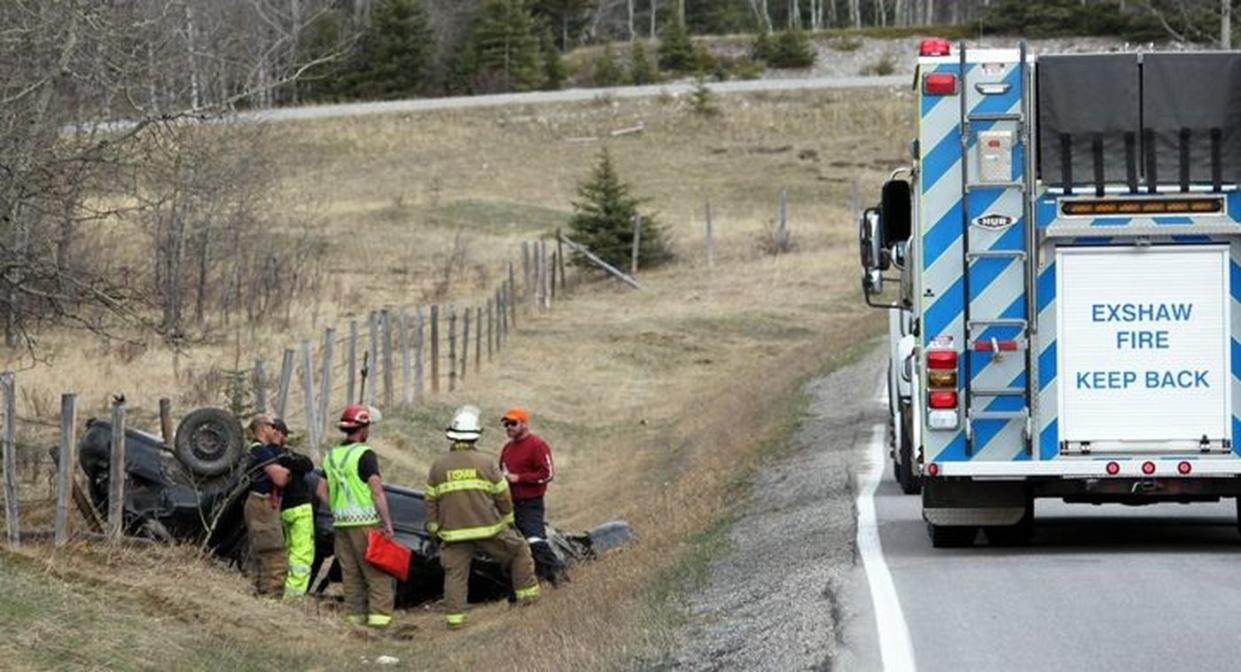MD of Bighorn greenlights fire service level policy

The MD of Bighorn has adopted policy defining levels of service for fire response, but there was still some confusion among council about hiring three new firefighters to ensure adequate coverage.
The policy outlines responsibilities, service levels for various calls, mutual aid agreements, fire prevention services and role definitions within the MD, and came at the recommendation of consultant Transitional Solutions in November 2023. The same consultant report advised Bighorn to add three full-time firefighters.
“I’m feeling that there’s some support for this policy around the council table, but where there is some hesitation, goes back to our budget meetings and it feels as though council doesn’t feel they had an opportunity at that time to maybe have a more robust conversation about these budgetary components going into the future with possibly hiring more firefighters,” said Bighorn Reeve Lisa Rosvold at council’s May 14 meeting.
The 2024 operating budget was approved by council in December and included a line item to hire three full-time firefighters and a deputy fire chief. A deputy fire chief has since been hired, but the MD has yet to move forward on the other staffing additions.
“I think that’s something we need to be cognizant of in our next budget cycle, and as something that gets passed in a budget, it means it’s approved in budget, and it’s something that we need to make sure that we’re well aware of,” said Rosvold.
Having approved the level of service policy for Bighorn Emergency Services – which encompasses fire halls in Exshaw, the Benchlands and Ghost River areas – fire chief and protective services director Andrew Box noted the next step would be hiring the three recommended firefighters.
“Council gave us the trigger to enact upon the three full-time firefighters [in the 2024 budget]. That’s the stance of administration,” he said.
Part of approving the hires in the budget was conditional on hosting a level of service workshop with council and senior members of administration to further identify cost analysis. This was held on Jan. 31, 2024.
“Council could have chosen to say, ‘you are not providing those service levels anymore,’ which could’ve possibly altered the reason for that staffing plan, but there was nothing in the level of service discussions that indicated that [council] wanted a different level or different delivery of services,” said Box, who repeatedly tried to draw council’s attention back to level of service policy, with that being the item on the table for decision.
The policy notes that within MD boundaries, residents and visitors can be exposed to various dangers from fire and other emergencies. It also covers emergency response challenges in Bighorn, including its geographical size, layout and staffing shortages.
The MD employs a composite fire services organization structure, comprised of full-time, casual and paid-on-call volunteer firefighters. The MD currently has a full-time fire chief, deputy fire chief, three district chiefs and more than 50 paid on-call firefighters. Statistics shared with council in November found over the previous three years, Bighorn had four paid on-call firefighters to respond to emergencies 69 per cent of the time, with most vulnerability in weekday daytime coverage.
The level of service policy states Bighorn Emergency Services will provide emergency response for all incidents it is “deemed required and practical to do so,” including structure fires, motor vehicle collisions, rescue calls, medical emergency co-response, during disaster situations, dangerous goods incidents and wildland fires within the MD or elsewhere, in accordance with policy.
Developing a level of service policy was one of 21 recommendations made by Transitional Solutions’ report to council.
Also recommended was exploring the potential of building another fire hall in Dead Man’s Flats to provide faster response to emergencies in nearby MD hamlets and incidents located along the Trans-Canada Highway. Council approved the cost of a feasibility study to explore that option in its 2024 budget at $100,000.
The Transitional report came after council directed municipal staff to look at better fire services, but also dissatisfaction with the price hike in the fire services mutual aid agreement with Bighorn and the Town of Canmore in 2022.
It was estimated the municipalities’ next mutual aid agreement renewal could cost Bighorn upwards of $300,000 per year, which Box noted would more than pay for two full-time firefighters.
Transitional also recommended the MD initiate talks with Alberta Transportation about building a bridge across the Bow River to better connect the Exshaw fire hall to other MD hamlets on the west side of the river, potentially reducing the need for Canmore Fire-Rescue’s assistance based on travel times.
Jessica Lee, Local Journalism Initiative Reporter, Rocky Mountain Outlook


